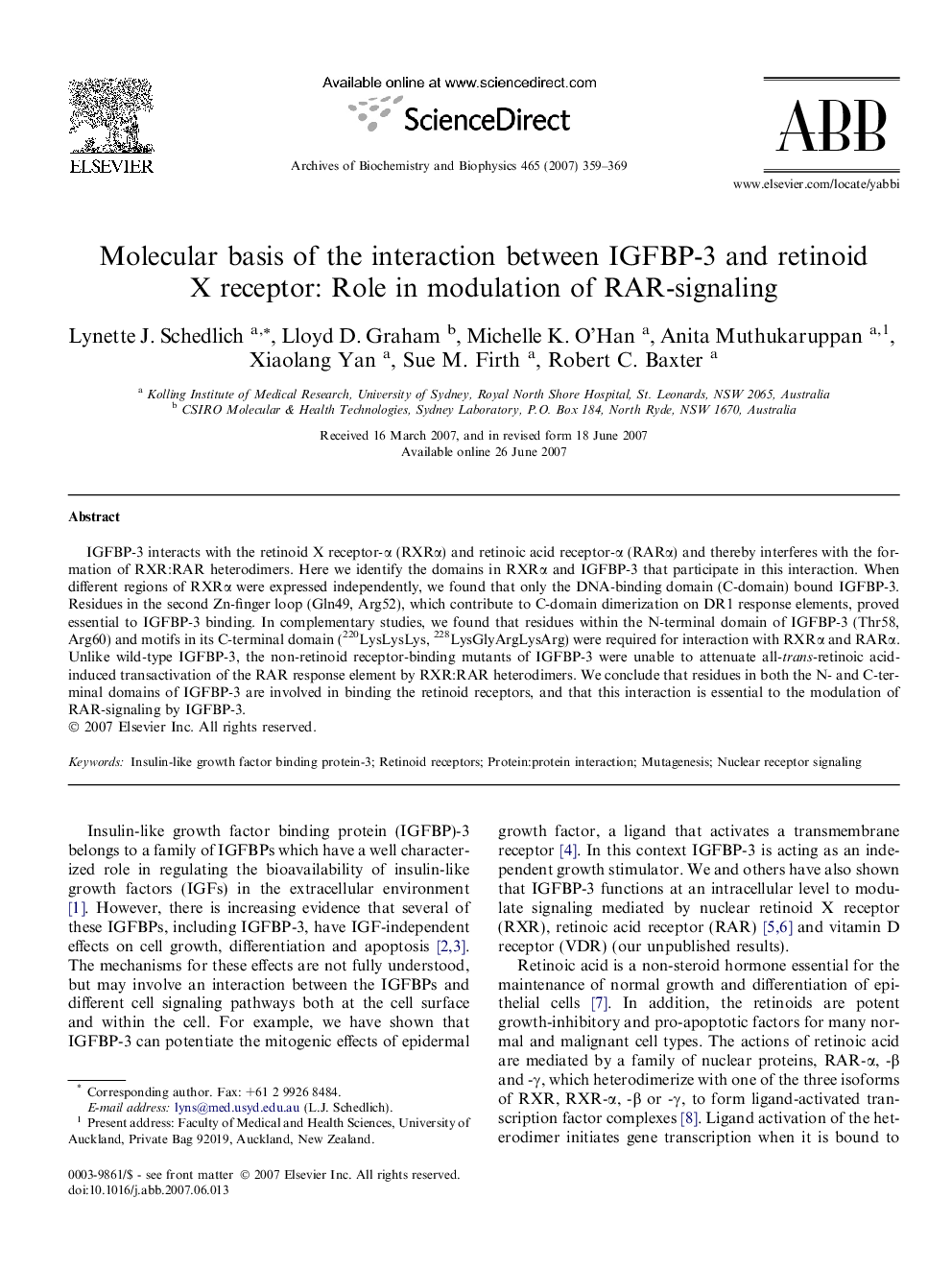| Article ID | Journal | Published Year | Pages | File Type |
|---|---|---|---|---|
| 1927077 | Archives of Biochemistry and Biophysics | 2007 | 11 Pages |
Abstract
IGFBP-3 interacts with the retinoid X receptor-α (RXRα) and retinoic acid receptor-α (RARα) and thereby interferes with the formation of RXR:RAR heterodimers. Here we identify the domains in RXRα and IGFBP-3 that participate in this interaction. When different regions of RXRα were expressed independently, we found that only the DNA-binding domain (C-domain) bound IGFBP-3. Residues in the second Zn-finger loop (Gln49, Arg52), which contribute to C-domain dimerization on DR1 response elements, proved essential to IGFBP-3 binding. In complementary studies, we found that residues within the N-terminal domain of IGFBP-3 (Thr58, Arg60) and motifs in its C-terminal domain (220LysLysLys, 228LysGlyArgLysArg) were required for interaction with RXRα and RARα. Unlike wild-type IGFBP-3, the non-retinoid receptor-binding mutants of IGFBP-3 were unable to attenuate all-trans-retinoic acid-induced transactivation of the RAR response element by RXR:RAR heterodimers. We conclude that residues in both the N- and C-terminal domains of IGFBP-3 are involved in binding the retinoid receptors, and that this interaction is essential to the modulation of RAR-signaling by IGFBP-3.
Keywords
Related Topics
Life Sciences
Biochemistry, Genetics and Molecular Biology
Biochemistry
Authors
Lynette J. Schedlich, Lloyd D. Graham, Michelle K. O'Han, Anita Muthukaruppan, Xiaolang Yan, Sue M. Firth, Robert C. Baxter,
